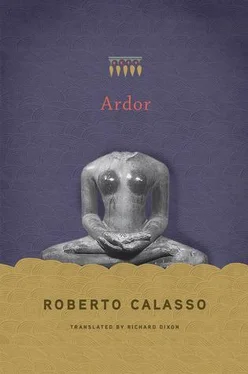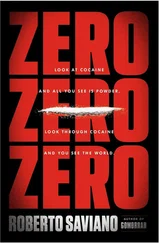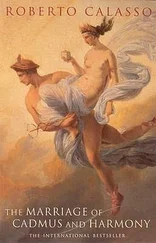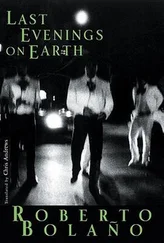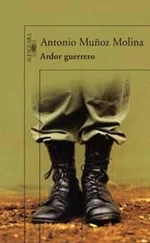* * *
The course of the sacrifice is punctuated with moments of drama — or even of comedy or subtle humor. So, for example, we find the story of Indradyumna Bhāllaveya (about whom we know little, but can presume he was a learned ritualist): “It happened that Bhāllaveya composed the incitative formula with an anuṣṭubh verse and the formula for the offering with a triṣṭubh verse, thinking: ‘In this way I will receive the benefits of both.’ He fell from his chariot and, on falling, broke his arm. He then began to reflect: ‘This has happened because of something I have done.’ Then he thought: ‘It has happened because of some breach by me of the correct procedure for the sacrifice.’ And so the correct procedure for the sacrifice must not be broken: and so the two formulas must have verses in the same meter, either both anuṣṭubh or both triṣṭubh. ” The sacrifice is a form that is composed in every single moment. And an error in form can be due to a certain greediness in desiring, to a wish to acquire too many benefits through the forms themselves. The result is immediate: Bhāllaveya falls from his chariot and breaks an arm. In the same way that the outside world is ready to offer the fruit of desire, so too is it ready to chastise any form that arises from a tainted desire. The prime purpose of the outside world is an ordeal. Depending on the meters that Bhāllaveya has selected and used, he either moves forward or falls from the chariot and breaks an arm.
The incident with Bhāllaveya clearly shows the Vedic attitude toward the world. There are three simultaneous passages, each included in the other: each event that occurs is significant; its significance is connected to an act performed by the person concerned; the ideal area in which every event takes place is the scene of the sacrifice. It is the scene of the action on which later actions depend. Bhāllaveya doesn’t immediately think the accident is due to blameworthy acts he has committed in normal life. His first thought goes to what he has done in the liturgy. That is the area that bristles with significance, the first to which his thoughts turn. Normal life is a secondary consequence of it. It is no surprise, then, that there was no concern at the time about leaving records or chronicles, and that history as such was ignored.
* * *
The sattra is the most extreme, esoteric, all-pervading rite in the Vedic liturgy for its conception, for its form. Based on the number twelve, it has to last for a minimum of twelve days, otherwise a whole year or, in theory, twelve years (in the last case it is known as the “great sattra ,” mahāsattra ). And this capacity to invade time, to fill it to its very limit, alone gives food for thought. Caland and Henry, with their usual clarity, immediately realized this and asked themselves: on what does the person celebrating a sattra live? And if the rite itself occupies a whole year, what life does he lead outside the rite? These were only their first questions: “One might at this point ask, not only what interest they had in celebrating [this rite] — for it would be irreverent to believe them incapable of holding a sincere faith and piety that would be self-sufficient — but at least on what these men lived, who, absorbed every day in the practice of a meticulous and taxing devotion, surely didn’t have the possibility to create resources by other ways.” The invasion of time, to the extent of forcing out every other form of life, was only one of the peculiarities of the rite. In the sattra there is no sacrificer: everyone is sacrificer and officiant at the same time. As a result, there is not even the ritual fee for priests. As a result, all twelve officiants have to go through the consecration, which is normally reserved only for the sacrificer. And they appear as a compact body, a group of beings consecrated for one single purpose. There are no divisions by categories or roles. The rite becomes absolute: it occupies the totality of time and is celebrated by beings consecrated for the sole purpose of carrying it out.
If a rite lasts a year and then begins immediately all over again, what time will there be for living life that is not part of a ritual? So the ritualists thought: if the game becomes untenable, fight back by raising the stakes. Are people afraid of rites that last a year? Let them listen then to a story in the life of the gods: “The gods were once celebrating the consecration ceremony for one [sacrificial session] of a thousand years. When five hundred years had passed, everything here was worn out, namely the stoma chants, the pṛṣṭha chants, and the meters.
“The gods then perceived the element of the sacrifice that cannot be worn out and by means of this element they obtained success in the Veda; and in truth, for him who knows this, the Vedas are intact and the work of the officiants is carried out with that inexhaustible, triple knowledge.”
What then is the element that remains intact? Anybody would be impatient to find out. Impassive, the ritualist is ready with the answer. It consists of five exclamations that punctuate certain moments of the ceremony. Eggeling doesn’t even translate them, as if they were simple interjections. But Minard, meticulous as ever in seeking to fix the “element of the sacrifice that cannot be worn out,” translates them as: “Oh, come! Here, listen! Adore! We, the worshippers! Heave-away!” We seem to be eavesdropping on a scene of men at work. And yet they are the germ cells of the sacrifice, loaded with power. But there is a further argument, of crucial significance for the ritualist. The syllables of the five exclamations, added together, are seventeen in number. And Prajāpati is composed of seventeen parts. It is a perfect example of sampad , that “correspondence” which is above all a “numerical congruence.” The sampad is the supreme weapon of the intellect, which Prajāpati finally resorts to in his duel with Death. When the gods realized this, they felt satisfied. They had isolated the inexhaustible element of the sacrifice — and had established the glorious truth that the five exclamations, added together, made seventeen syllables. It was another way of saying: added together, they made Prajāpati, the Progenitor.
For once, then, they were concerned about mankind. They knew man was too weak to resist. He would never even manage to celebrate a rite of only five hundred years. They said to themselves: “Let us find a sacrifice that is a substitute for the thousand-year sacrifice.” And they tried hard to combine and compress the forms. An activity they were most fond of. They invented accelerated rites, in the same way as accelerated courses would one day be invented for students who lag behind — and, for the gods, all humans lag behind. In the end, with a sense of relief, they established the minimum form of sacrifice, the shortest, most suitable form for human capabilities — as well as being arranged to correspond, in miniature, with the complete form. And so they said to each other: “When he [the sacrificer] spends one year celebrating the rites of consecration, in this way he is assured of the first part of the thousand-year ceremony; and when he spends a year celebrating the upasads [a particular soma rite], in this way he is assured of the central part of the thousand-year ceremony; and when he spends a year with the pressing [of soma ], in this way he is assured of the final part of the thousand-year ceremony.” All was now clear. People need no longer worry. The gods had found the abbreviated formula for the ceremony, gauged to fit man’s capabilities. It was enough for them to sacrifice for three years in succession. And the gods, in their magnanimity, would accept the ceremony as if it had lasted a thousand years.
Читать дальше
